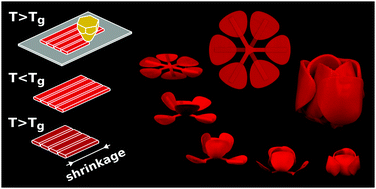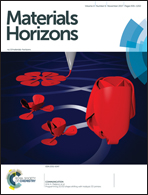Programming 2D/3D shape-shifting with hobbyist 3D printers†
Abstract
Materials and devices with advanced functionalities often need to combine complex 3D shapes with functionality-inducing surface features. Precisely controlled bio-nanopatterns, printed electronic components, and sensors/actuators are all examples of such surface features. However, the vast majority of the refined technologies that are currently available for creating functional surface features work only on flat surfaces. Here we present initially flat constructs that upon triggering by high temperatures change their shape to a pre-programmed 3D shape, thereby enabling the combination of surface-related functionalities with complex 3D shapes. A number of shape-shifting materials have been proposed during the last few years based on various types of advanced technologies. The proposed techniques often require multiple fabrication steps and special materials, while being limited in terms of the 3D shapes they could achieve. The approach presented here is a single-step printing process that requires only a hobbyist 3D printer and inexpensive off-the-shelf materials. It also lends itself to a host of design strategies based on self-folding origami, instability-driven pop-up, and ‘sequential’ shape-shifting to unprecedentedly expand the space of achievable 3D shapes. This combination of simplicity and versatility is a key to widespread applications.



 Please wait while we load your content...
Please wait while we load your content...